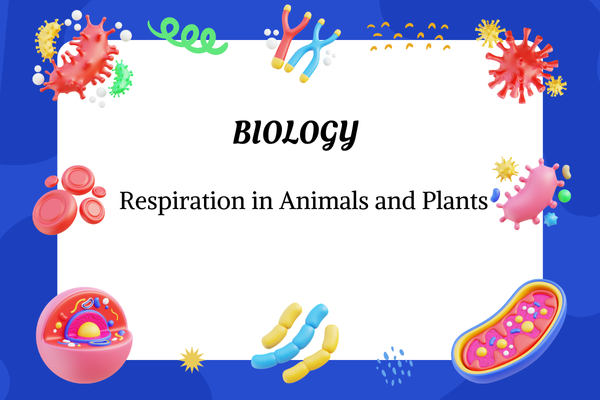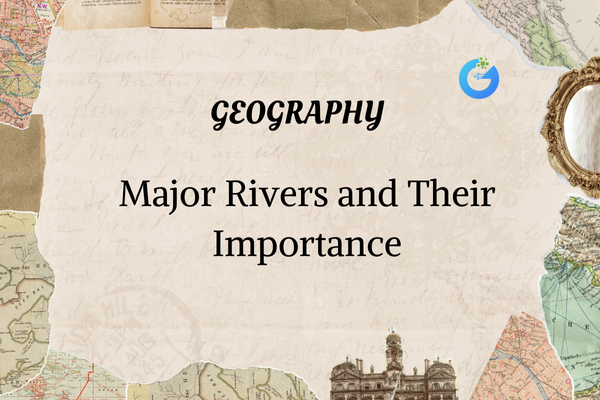Introduction – Breathing Isn’t Just About Air!
Imagine running around the playground—you’re breathing fast, your heart is pumping, and your body feels warm. That’s your body doing respiration—a process that turns the food you eat into energy! But guess what? Plants also do respiration, even though they don’t have lungs or run around!
Respiration is like a tiny power station inside every living cell, working day and night to keep life going. It’s how energy is made from food—and all living things need it, from lions to lettuce.
expert-led Biology classes – visit our website to learn more
Who Does Respiration?
Respiration isn’t just a human thing—it happens in all living organisms:
- Animals (like you, your pet dog, or a tiger) breathe in oxygen and use it to break down food and release energy.
- Plants also need energy, so they do respiration too—even though they make their own food during photosynthesis!
- Even microscopic organisms like bacteria and amoeba do respiration, using different methods depending on where they live.
No matter the size, every living cell respires. Without respiration, life would simply stop.
Why Is Respiration Important?
Respiration is life’s fuel station. Here’s why it’s so important:
- It gives cells the energy they need to grow, move, repair, and stay alive.
- It powers everything from your heartbeat to blinking your eyes to thinking thoughts!
- In plants, energy from respiration helps in growth, moving water and nutrients, and making seeds and flowers.
Even though plants make food through photosynthesis, they still need respiration to use that food and stay alive.
When Does Respiration Happen?
All the time! Respiration is a continuous process. It doesn’t take breaks, even when you sleep.
- At night, plants stop photosynthesis (no sunlight), but they continue respiration to stay alive.
- During the day, they do both—photosynthesis to make food, and respiration to use it.
For animals, respiration happens every second, nonstop—from the day they’re born to the moment they die.
Where Does Respiration Happen?
It all happens inside cells. There are tiny structures in animal and plant cells called mitochondria, known as the “powerhouses” of the cell.
That’s where the food (glucose) reacts with oxygen to produce energy, carbon dioxide, and water.
In plants, it happens in every cell, especially in the roots, stems, and leaves. In animals, it happens in muscles, brain, skin—everywhere!
How Does Respiration Work?
Respiration happens in two main ways:
1. Aerobic Respiration – with oxygen (most common)
Glucose (from food) + Oxygen → Carbon dioxide + Water + Energy
Animals and most plants use aerobic respiration because oxygen is usually available.
2. Anaerobic Respiration – without oxygen (used sometimes)
Some bacteria and our muscles (during intense exercise) can respire without oxygen, but this gives less energy and may produce lactic acid (causing cramps).
Core Concepts – What You Should Know
| Concept | Meaning | Example |
| Respiration | A process that releases energy from food | Happens in both animals and plants |
| Aerobic Respiration | Respiration using oxygen | What most animals and plants do |
| Anaerobic Respiration | Respiration without oxygen | Happens during heavy exercise |
| Mitochondria | The cell’s energy factory where respiration happens | Found in plant and animal cells |
| Glucose | A type of sugar used as fuel for respiration | Comes from food or made in leaves |
FAQs – Curious Questions Kids Might Ask
Q1: Do plants breathe like humans?
Not exactly! They don’t have lungs, but they do take in oxygen and release carbon dioxide through tiny holes in their leaves.
Q2: Is respiration the same as breathing?
Breathing is part of respiration in animals—but respiration is the cellular process that uses oxygen to make energy.
Q3: Do all parts of a plant respire?
Yes! Roots, stems, leaves—every part of a plant needs energy, so all of them respire.
Q4: Why do we feel tired after running?
Your muscles may switch to anaerobic respiration, which gives less energy and makes lactic acid, causing cramps!
Q5: Can respiration stop?
If it did, the organism would stop living. It’s that important!
Fun Facts About Respiration!
- Plants “breathe” too! They take in oxygen and give out carbon dioxide—just like animals.
- Fish use gills to take in oxygen from water, but they still do cellular respiration like us.
- When you get a stitch during a run, it might be your muscles using anaerobic respiration.
- Your body has trillions of mitochondria, each working nonstop to make energy for you.
- Seeds respire even before they sprout. That’s how they have energy to grow in the dark underground!
Conclusion – Energy for Life
Respiration is the secret engine that powers life. From your pet cat to the tree in your yard, every living thing is using food and oxygen to make energy—all the time.
So, the next time you take a breath, chew your lunch, or watch a plant grow, remember: respiration is quietly at work, keeping life going one tiny cell at a time!








